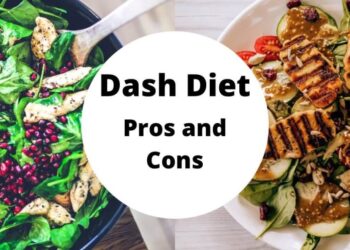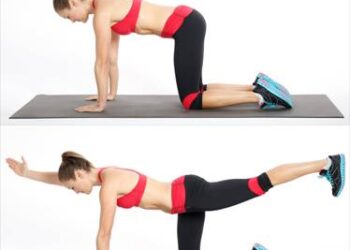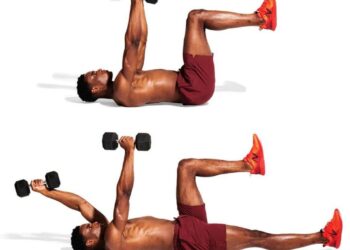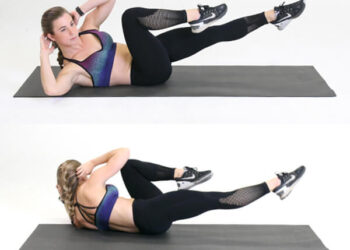
In the journey of fat burning and muscle building, establishing a comprehensive training plan is crucial. Combining cardiovascular exercises to burn fat with muscle-building workouts creates an effective balance for achieving fat loss and muscle development.
Part 1: Fat Burning
Introduction to Fat Burning
In the process of weight loss and improving physique, fat burning plays a pivotal role. Cardio exercises, an essential aspect of a workout plan, not only enhance cardiovascular health but also play a significant role in burning excess fat.
a. Cardiovascular Exercises
- Running: One of the most popular cardiovascular activities. Depending on your goals and capabilities, you can run at various speeds, from a light jog to sprinting or long-distance running.
- Cycling: Cycling is also an excellent cardiovascular exercise, whether outdoors or on a stationary bike.
- Swimming: Not only does swimming improve health, but it’s also beneficial for fat burning and strengthening overall muscle groups.
- Jumping Rope: A simple yet effective exercise that enhances flexibility, strength, and burns a significant amount of calories.
b. High-Intensity Interval Training (HIIT) Techniques
Introduction to HIIT
High-Intensity Interval Training (HIIT) is a workout strategy that alternates between intense bursts of exercise and short recovery periods. This training method involves pushing your body to work at maximum effort for short intervals, followed by brief rest or low-intensity activity. HIIT workouts are known for their efficiency in burning calories and improving cardiovascular fitness in a shorter amount of time compared to traditional steady-state exercises.
Basic Principles of HIIT
- Interval Structure: HIIT sessions typically consist of short, intense bursts of exercise lasting from 20 seconds to several minutes, followed by a recovery period of equal or slightly longer duration.
- Intensity Levels: The key to HIIT is pushing yourself to work near maximum capacity during the intense intervals, making the exercises highly demanding and effective.
- Exercise Variety: HIIT can incorporate various exercises such as sprints, bodyweight exercises, cycling, jumping exercises, and more, offering versatility and preventing workout monotony.
Benefits of HIIT
- Efficient Fat Burning: HIIT has been shown to be extremely effective in burning calories and fat, both during and after the workout, due to the elevated metabolism post-exercise.
- Time-Saving Workouts: HIIT workouts are typically shorter in duration compared to traditional steady-state exercises but can yield similar or even superior results.
- Improved Cardiovascular Health: HIIT enhances cardiovascular fitness by improving heart health, increasing oxygen consumption, and lowering blood pressure.
- Muscle Building and Metabolism: Alongside burning fat, HIIT promotes muscle building, and it can boost metabolism for several hours post-exercise, aiding in overall calorie expenditure.
Implementing HIIT Workouts
- Warm-Up: Always begin with a proper warm-up to prepare your body for the intense intervals and reduce the risk of injury.
- Interval Structure: Design a workout plan with specific intervals for intense exercise and recovery periods. These intervals can be adjusted based on fitness level and goals.
- Exercise Selection: Choose exercises that engage major muscle groups and can be performed with high intensity, ensuring proper form and technique.
- Progressive Overload: Gradually increase the intensity or duration of the high-intensity intervals as your fitness improves to continually challenge your body.
Safety Considerations
- Consultation: If you’re new to HIIT or have any health concerns, consult a fitness professional or healthcare provider before starting a HIIT regimen.
- Proper Form: Correct technique is crucial to prevent injuries. Focus on maintaining proper form during each exercise to reduce the risk of strains or sprains.
- Listen to Your Body: Pay attention to your body’s signals. If you feel extreme discomfort, dizziness, or severe shortness of breath during a workout, stop and rest.
High-Intensity Interval Training (HIIT) offers a potent workout approach that maximizes calorie burn and cardiovascular fitness in a shorter time frame. Integrating HIIT into your exercise routine, with proper technique, progression, and safety considerations, can yield significant fitness benefits.
Benefits of Fat Burning
- Calorie Burning: Cardio and HIIT exercises enhance calorie burning, particularly burning excess body fat.
- Improved Cardiovascular Health: Cardio workouts improve cardiovascular health, strengthen the heart, and boost the cardiovascular system’s efficiency.
- Effective Weight Loss: Incorporating cardio and HIIT into a workout plan aids in achieving rapid and efficient weight loss.
- Increased Energy: Cardio training improves blood circulation, providing more energy for daily activities.
The Fat Burning section in the workout plan is a crucial step in achieving weight loss and holistic health improvement. The combination of cardio exercises and HIIT will efficiently burn excess fat and yield quick results.

Part 2: Muscle Building
In the process of training to build muscles, performing strength exercises plays a crucial role. Building muscles not only contributes to a more appealing physique but also improves overall strength and health.
I. Muscle-Building Exercises
1. Weightlifting
Weightlifting is a fundamental aspect of muscle-building workouts, targeting various muscle groups including triceps, chest, shoulders, and more. Different exercises such as bench press, overhead press, and tricep extensions can be performed using barbells, dumbbells, or weight machines to stimulate muscle growth.
2. Pulling Exercises
Pulling exercises engage muscles in the back, shoulders, and arms. These exercises include pull-ups, lat pulldowns, rows, and bicep curls. Implementing different grips and angles during these exercises can target distinct muscle groups for comprehensive development.
3. Squats
Squats are a compound exercise focusing on thighs, hips, and glutes. It involves bending the knees and hips while maintaining an upright torso. Variations such as front squats, back squats, or goblet squats can be employed to intensify the exercise and target specific muscle areas.
4. Deadlifts
Deadlifts primarily work the lower back, thighs, and glutes. It involves lifting a weighted barbell or other weights from the ground to a standing position. Deadlift variations like Romanian deadlifts or sumo deadlifts can offer diverse muscle stimulation.
Principles of Muscle-Building Exercises
- Progressive Overload: Gradually increasing the resistance, weight, or intensity of exercises over time is crucial for muscle growth. It challenges muscles to adapt and grow stronger.
- Proper Form and Technique: Maintaining correct form during exercises is essential for maximizing effectiveness and preventing injuries. Seek guidance from a fitness professional if needed.
- Rest and Recovery: Allowing adequate rest between workout sessions is vital for muscle recovery and growth. Muscles repair and strengthen during rest periods.
Benefits of Muscle-Building Exercises
- Muscle Hypertrophy: Muscle-building exercises stimulate muscle growth, leading to increased muscle mass and strength.
- Metabolic Boost: Building lean muscle mass contributes to a higher metabolic rate, aiding in efficient calorie burning.
- Improved Functional Strength: Enhanced muscle strength translates to improved daily activities and overall functional strength.
- Injury Prevention: Strengthening muscles and joints can reduce the risk of injuries during physical activities and workouts.
Muscle-building exercises play a significant role in enhancing overall strength, muscle mass, and functional abilities. Incorporating a variety of exercises targeting different muscle groups with proper technique, progressive overload, and adequate recovery will yield optimal results in muscle growth and strength development.

II. Principles of Muscle Building
Building muscle involves more than just lifting weights; it requires an understanding of fundamental principles that contribute to effective muscle growth and development. These principles form the cornerstone of any successful muscle-building program.
1. Progressive Overload
Progressive overload is the foundational principle of muscle building. It involves gradually increasing the intensity, resistance, or volume of exercises to continually challenge muscles. This incremental increase in workload forces muscles to adapt, grow stronger, and develop hypertrophy. Without progressive overload, muscles won’t have a stimulus to grow.
2. Proper Form and Technique
Maintaining proper form and technique during exercises is crucial for maximizing muscle engagement, preventing injury, and ensuring optimal results. Performing exercises with improper form not only reduces their effectiveness but also increases the risk of injury. Seeking guidance from a qualified fitness professional can help individuals learn correct techniques for various exercises.
3. Rest and Recovery
Rest and recovery are equally important as exercise itself for muscle growth. During workouts, muscles undergo stress and micro-tears. It’s during rest periods that muscles repair and rebuild, becoming stronger and larger. Adequate sleep, proper nutrition, and scheduling rest days between workouts are vital for optimal recovery and muscle repair.
4. Exercise Variation
Muscle adaptation occurs when the body becomes accustomed to a particular exercise routine. To continually challenge muscles and prevent plateauing, it’s essential to introduce exercise variety. Varying exercises, angles, grips, and rep ranges engages different muscle fibers, promoting overall muscle development.
5. Nutrition and Diet
Proper nutrition is a critical component of muscle building. A balanced diet with sufficient protein, carbohydrates, healthy fats, and micronutrients provides the necessary fuel and building blocks for muscle growth. Protein is particularly important for repairing and rebuilding muscle tissue after workouts.
6. Consistency and Patience
Building muscle is a gradual process that requires consistency, patience, and dedication. Results take time to manifest, and expecting immediate changes can lead to frustration. Consistent adherence to a well-structured workout routine, along with the aforementioned principles, is key to long-term success.
Benefits of Following Muscle Building Principles
- Increased Muscle Mass: Consistently applying these principles leads to muscle hypertrophy, resulting in increased muscle size and strength.
- Improved Strength and Functionality: Stronger muscles enhance overall strength, making daily activities easier and reducing the risk of injuries.
- Enhanced Metabolism: Muscle-building workouts increase metabolic rate, aiding in more efficient calorie burning even at rest.
- Aesthetic Benefits: Proper muscle-building principles contribute to a more defined and toned physique.
Understanding and applying the principles of muscle building is essential for achieving optimal results. Combining progressive overload, proper technique, adequate rest, nutritional support, exercise variation, consistency, and patience forms a solid foundation for successful muscle growth and development. Integrating these principles into a well-structured training program will lead to significant improvements in muscle mass, strength, and overall fitness.
III. Benefits of Muscle Building
Muscle building, beyond its aesthetic appeal, offers a multitude of benefits that significantly impact overall health, functional capacity, and well-being. These benefits extend far beyond a sculpted physique and play a pivotal role in enhancing various aspects of an individual’s life.
1. Increased Muscle Mass and Strength
One of the most apparent benefits of muscle building is the increase in muscle mass and strength. Engaging in resistance training stimulates muscle fibers, leading to hypertrophy and enhanced muscle strength. Greater muscle mass not only contributes to a more defined physique but also improves functional strength, making daily tasks easier and reducing the risk of injury.
2. Enhanced Metabolic Rate
Muscle tissue is metabolically active, meaning it requires energy even at rest. Building and maintaining lean muscle mass boosts the basal metabolic rate (BMR), resulting in increased calorie expenditure throughout the day. This heightened metabolic rate aids in more efficient weight management and can assist in weight loss or weight maintenance efforts.
3. Improved Bone Health
Resistance training, a fundamental aspect of muscle building, places stress on bones, stimulating bone remodeling and strengthening. Regular weight-bearing exercises promote bone density and reduce the risk of osteoporosis or bone-related ailments, especially in aging individuals.
4. Enhanced Insulin Sensitivity
Increased muscle mass correlates with improved insulin sensitivity. Building muscle and reducing body fat positively impact insulin sensitivity, helping regulate blood sugar levels and reducing the risk of type 2 diabetes. Effective insulin sensitivity assists in better nutrient utilization and glucose management.
5. Cardiovascular Health Benefits
While cardiovascular exercises primarily target the heart and circulatory system, incorporating muscle-building exercises also offers cardiovascular benefits. A strong muscular system complements heart health by improving circulation, reducing resting heart rate, and enhancing overall cardiovascular efficiency.
6. Aesthetic and Confidence Boost
A toned and sculpted physique resulting from muscle building often contributes to a positive body image and increased self-confidence. Achieving personal fitness goals and witnessing physical transformations can bolster self-esteem and promote a sense of accomplishment.
7. Improved Posture and Joint Health
A well-developed musculature supports better posture and spinal alignment. Strengthening core muscles and various muscle groups around the spine and joints aids in maintaining proper posture, reducing the risk of postural imbalances and related issues.
8. Longevity and Functional Independence
Maintaining muscle mass and strength as one ages is crucial for functional independence and quality of life. Strong muscles support mobility, balance, and independence in performing daily activities, ultimately contributing to a higher quality of life as individuals age.
The benefits of muscle building extend far beyond aesthetics, impacting various aspects of health, wellness, and overall quality of life. The multifaceted advantages include improved strength, metabolism, bone health, insulin sensitivity, cardiovascular well-being, and psychological confidence. Incorporating muscle-building exercises into a well-rounded fitness regimen not only enhances physical appearance but also fosters a healthier and more resilient body, promoting overall well-being and vitality.
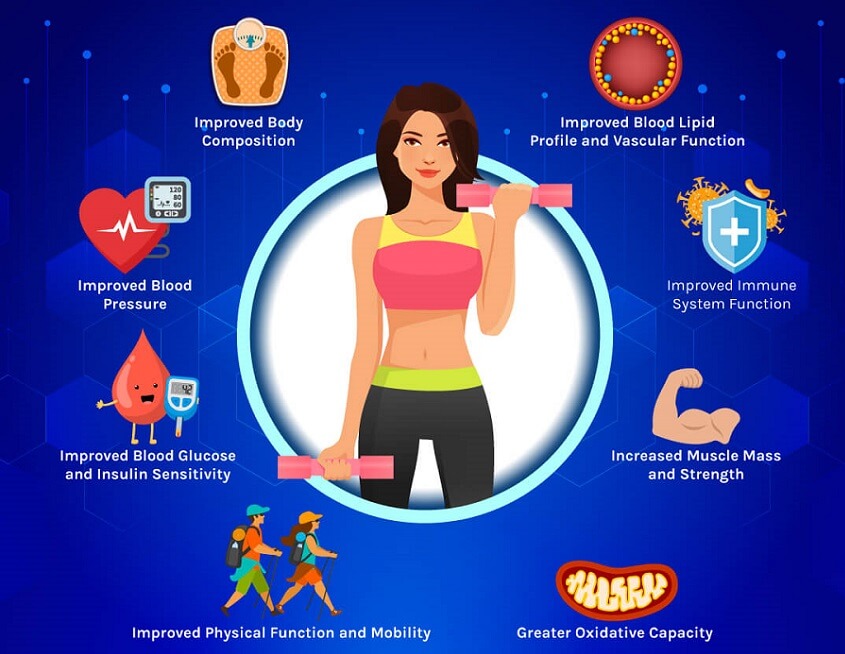
Planning and Execution
The effectiveness of any fitness journey, including muscle building and overall physical transformation, heavily relies on a well-structured plan and its successful execution. The Planning and Execution phase involves creating a strategic roadmap and implementing it systematically to achieve specific fitness goals.
Setting Clear and Achievable Goals
- Goal Identification: Clearly define what you want to achieve, whether it’s muscle gain, weight loss, or overall fitness improvement. Set realistic and specific goals, such as gaining a certain amount of muscle mass or reducing body fat percentage.
- SMART Goals: Utilize the SMART criteria—Specific, Measurable, Achievable, Relevant, and Time-bound—to create well-defined objectives. This approach ensures clarity and feasibility in goal-setting.
Creating a Structured Plan
- Workout Plan: Develop a workout routine that aligns with your goals, incorporating both strength training and cardio exercises. Plan exercises targeting different muscle groups, focusing on progressive overload and exercise variation.
- Nutritional Plan: Craft a balanced and personalized nutrition plan that supports muscle building. Ensure adequate protein intake, healthy fats, complex carbohydrates, vitamins, and minerals to fuel workouts and aid muscle recovery.
- Rest and Recovery: Schedule rest days within your plan to allow muscles to repair and grow. Adequate sleep, hydration, and stress management are integral components of the plan to optimize recovery.
Implementation and Consistency
- Commitment to Execution: Implement the plan consistently, adhering to the workout and nutrition regimen without deviations. Consistency is key to achieving desired results.
- Adaptability and Flexibility: While consistency is crucial, it’s equally essential to be adaptable. Modify the plan as needed to accommodate changes in schedule, fitness levels, or personal circumstances.
Tracking Progress and Adjustments
- Progress Tracking: Regularly monitor progress using various metrics like body measurements, strength gains, or changes in body composition. Tracking progress helps evaluate the effectiveness of the plan.
- Adjustments and Modifications: Based on progress, make necessary adjustments to the workout routine, nutrition, or overall plan. This might involve tweaking exercises, adjusting caloric intake, or altering workout frequency for better results.
Overcoming Challenges and Staying Motivated
- Facing Plateaus: Plateaus are normal in any fitness journey. Utilize strategies such as changing workouts, increasing intensity, or seeking guidance from a fitness professional to overcome plateaus.
- Staying Motivated: Maintain motivation by celebrating small achievements, setting short-term milestones, and seeking support from peers or fitness communities. Visualize goals regularly to stay focused and driven.
The Planning and Execution phase is the backbone of any successful fitness endeavor, including muscle building. A meticulously designed plan, combined with consistent execution, allows individuals to stay on track, make progress, and achieve their fitness goals. Flexibility, adaptability, monitoring progress, and staying motivated are essential components of this phase to navigate challenges and sustain long-term commitment towards reaching desired fitness outcomes.

Final Notes
This comprehensive exercise plan requires patience, consideration, and dedication to yield results. The combination of fat burning and muscle building demands persistence and commitment to your fitness goals. Continuously listen to your body and adjust your workout plan based on your individual progress and feelings.
Source: Admin compiled from the Internet


